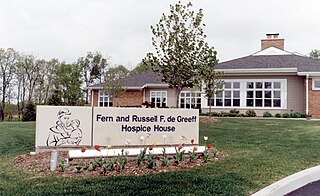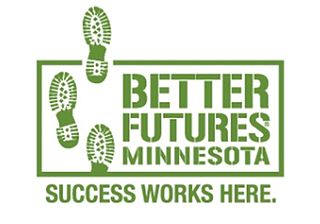Palliative care is an interdisciplinary medical caregiving approach aimed at optimizing quality of life and mitigating suffering among people with serious, complex, and often terminal illnesses. Within the published literature, many definitions of palliative care exist. The World Health Organization (WHO) describes palliative care as "an approach that improves the quality of life of patients and their families facing the problems associated with life-threatening illness, through the prevention and relief of suffering by means of early identification and impeccable assessment and treatment of pain, illnesses including other problems whether physical, psychosocial, and spiritual". In the past, palliative care was a disease specific approach, but today the WHO takes a broader patient-centered approach that suggests that the principles of palliative care should be applied as early as possible to any chronic and ultimately fatal illness. This shift was important because if a disease-oriented approach is followed, the needs and preferences of the patient are not fully met and aspects of care, such as pain, quality of life, and social support, as well as spiritual and emotional needs, fail to be addressed. Rather, a patient-centered model prioritizes relief of suffering and tailors care to increase the quality of life for terminally ill patients.

Marie Curie is a registered charitable organisation in the United Kingdom which provides hospice care and support for anyone with an illness they’re likely to die from, and those close to them, and campaigns for better support for dying people. It was established in 1948, the same year as the National Health Service (NHS).

Julio José Frenk Mora is a Mexican physician and sociologist. He has been the president of the University of Miami since 2015. He is the University of Miami's first Hispanic and native Spanish-speaking president. At the University of Miami, he is also a professor of public health science at the university's Leonard M. Miller School of Medicine, professor of health sector management at the university's Herbert Business School, and professor of sociology at its College of Arts of Sciences.

Ira Robert Byock is an American physician, author, and advocate for palliative care. He is founder and chief medical officer of the Providence St. Joseph Health Institute for Human Caring in Torrance, California, and holds appointments as active emeritus professor of medicine and professor of community health and family medicine at the Geisel School of Medicine at Dartmouth College. He was director of palliative medicine at Dartmouth–Hitchcock Medical Center, from 2003–14, and associate director for patient and family-centered care at the affiliated Norris-Cotton Cancer Center.

Risa J. Lavizzo-Mourey is an American medical doctor and executive who served as president and CEO of the Robert Wood Johnson Foundation from 2003 to 2017. She was the first woman and the first African-American to head the foundation, which has an endowment of about $8 billion and distributes more than $400 million a year. She has been named one of the 100 Most Powerful Women by Forbes several times, and one of The Grio's History Makers in the Making. She was elected a Member of the American Philosophical Society in 2016.

Hospice care is a type of health care that focuses on the palliation of a terminally ill patient's pain and symptoms and attending to their emotional and spiritual needs at the end of life. Hospice care prioritizes comfort and quality of life by reducing pain and suffering. Hospice care provides an alternative to therapies focused on life-prolonging measures that may be arduous, likely to cause more symptoms, or are not aligned with a person's goals.

Richard E. Besser is an American doctor and executive who has served as president and CEO of the Robert Wood Johnson Foundation since April 2017. Besser served as the acting director of the Centers for Disease Control and Prevention (CDC) and the Agency for Toxic Substances and Disease Registry (ATSDR) from January to June 2009. He was ABC News' former chief health and medical editor. Besser is a brother-in-law to Scottish singer Annie Lennox.
Diane E. Meier, an American geriatrician and palliative care specialist. In 1999, Dr. Meier founded the Center to Advance Palliative Care, a national organization devoted to increasing access to quality health care in the United States for people living with serious illness. She continues to serve as CAPC's Director Emerita and Strategic Medical Advisor. Meier is also Vice-Chair for Public Policy, Professor of Geriatrics and Palliative Medicine and Catherine Gaisman Professor of Medical Ethics at the Icahn School of Medicine at Mount Sinai Hospital in New York City. Meier was founder and Director of the Hertzberg Palliative Care Institute at the Icahn School of Medicine in New York City from 1997 to 2011.
Rebecca Onie is the co-founder with Rocco J Perla of The Health Initiative, a nationwide effort to spur a new conversation about - and new investments in - health. In 2017, she was elected to the National Academy of Medicine as a nationally recognized leader in the intersection of social determinants, population health, and healthcare delivery. Onie is also the co-founder and Chief Executive Officer Emerita of Health Leads.
AcademyHealth is a nonpartisan, nonprofit professional organization dedicated to advancing the fields of health services research and health policy. It is a professional organization for health services researchers, health policy analysts, and health practitioners, and it is a nonpartisan source for health research and policy. The organization was founded in 2000, in a merger between the Alpha Center and the Association for Health Services Research (AHSR). In 2008, the organization had approximately 4000 health services researcher members.
Aligning Forces for Quality is a U.S. national program of the Robert Wood Johnson Foundation aiming to lift the quality of health care in 16 targeted communities, reduce racial and ethnic disparities in those communities and provide models for national reform. Each regional Health care improvement collaborative aims to create sustainable improvements in health care quality throughout its targeted communities by 2015. To do so, the initiative fosters collaboration among multiple stakeholders in a community. Aligning Forces For Quality focuses its efforts on three main areas: Performance measurement and public reporting, consumer engagement, and quality improvement. Aligning Forces for Quality is the single largest philanthropic effort of its kind undertaken to improve the quality of U.S. health care.

Health Leads is a national non-profit organization based in Boston with a stated vision of "health, dignity, and well-being for every person, in every community." The organization runs community-based programs and learning initiatives across the U.S. that focus on addressing social, racial, and economic factors that impact health.
Keeping Families Together is a program of the Corporation for Supportive Housing (CSH) that aims to provide supportive housing to vulnerable families in order to enhance children’s safety and help prevent foster care placement. It brings together affordable housing with other social services and city agencies to help families with issues like substance abuse, medication management, parenting skills and career counseling.

The Network for Better Futures d/b/a Better Futures Minnesota is a non-profit social enterprise based in Minneapolis, Minnesota, dedicated to reintegrating high-risk adults, primarily African-American men, into society by providing a platform to help them succeed. The agency works with men with histories of incarceration, substance abuse, chronic unemployment, and homelessness—men who have a high risk of being repeat offenders.

Bloomberg Philanthropies is a philanthropic organization that encompasses all of the charitable giving of founder Michael R. Bloomberg. Headquartered in New York City, Bloomberg Philanthropies focuses its resources on five areas: the environment, public health, the arts, government innovation and education. According to the Foundation Center, Bloomberg Philanthropies was the 10th largest foundation in the United States in 2015, the last year for which data was available. Bloomberg has pledged to donate the majority of his wealth, currently estimated at more than $54 billion. Patti Harris is the CEO of Bloomberg Philanthropies.
The John A. Hartford Foundation is a private United States-based philanthropy whose current mission is to improve the care of older adults. For many years, it made grants for research and education in geriatric medicine, nursing and social work. It now focuses on three priority areas: creating age-friendly health systems, supporting family caregivers and improving serious illness, and end-of-life care.
The End-of-Life Nursing Education Consortium (ELNEC) project is a national education initiative whose mission is to improve palliative care. The project provides an undergraduate and graduate nursing faculty, CE providers, staff development educators, specialty nurses in pediatrics, oncology, critical care, and geriatrics, and other nurses with training in palliative care so they can teach this information to nursing students and practicing nurses. ELNEC is a partnership between the American Association of Colleges of Nursing (AACN), Washington, DC and the City of Hope, Duarte, CA. The project provides undergraduate and graduate nursing faculty, CE providers, staff development educators, specialty nurses in pediatrics, oncology, critical care, and geriatrics, and other nurses with palliative care training. Once trained, these healthcare professionals go on to teach this essential information to nursing students and practicing nurses. The project, which began in February 2000, was initially funded by a major grant from The Robert Wood Johnson Foundation (RWJF). The National Cancer Institute (NCI), American Association of Colleges of Nursing (AACN), US Cancer Pain Relief Committee, the Aetna, Archstone, Oncology Nursing, California HealthCare, Milbank, Stupski, Open Society, and Cambia Health Foundations, and the Department of Veterans Affairs (VA) have provided additional funding.
Lorraine Quinn Frazier is an Irish-American nurse. She is the dean of the Columbia University School of Nursing, having previously served in similar roles at the University of Texas Health Science Center at Houston and University of Arkansas for Medical Sciences.

Mother Cabrini Health Foundation is a private American charitable foundation that provides funding for healthcare and health-related initiatives in the U.S. state of New York, aimed at low-income and underserved communities. It is the largest health foundation focused only on New York.
Naheed Dosani is a palliative care physician based in Ontario, Canada, who founded and leads the Palliative Education and Care for the Homeless (PEACH) program. For his efforts in providing mobile healthcare to individuals with vulnerable housing or are homeless, Dosani has received a Meritorious Service Cross from the Governor General of Canada (2017), and a Canadian Medical Association Award for Young Leaders (2020).











